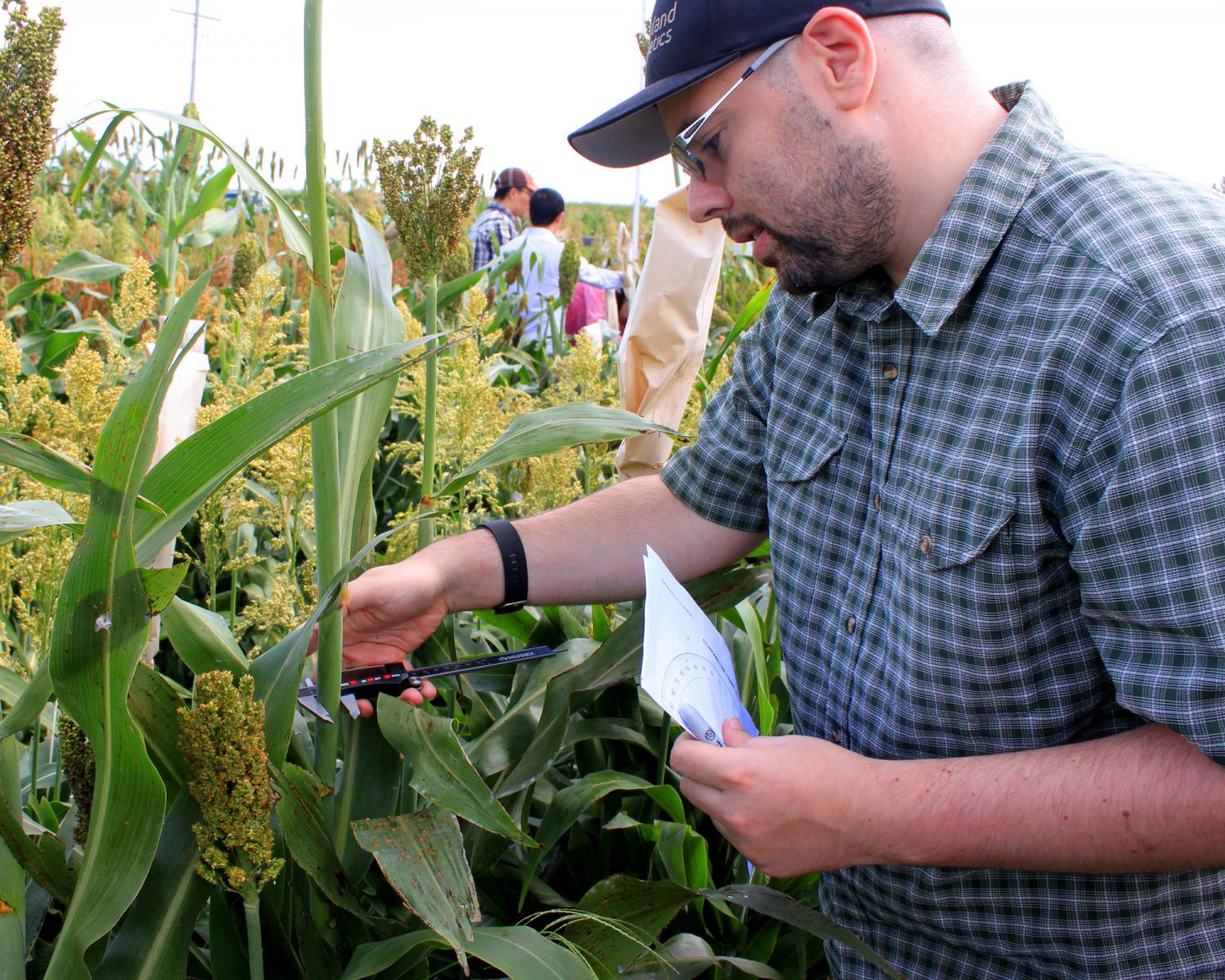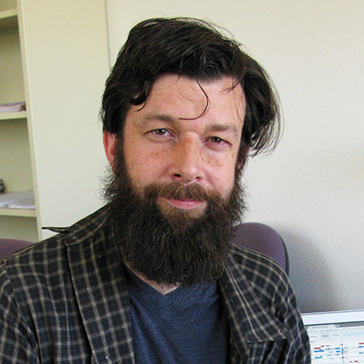Invited Speakers

Delphine Fluery
Director of the ARC Industrial Research Transformation Hub, University of Adelaide, Adelaide, Australia
Fluery obtained a Ph.D. in plant genetics in 2001 at the ENSAT (Toulouse, France) where she studied sunflower for two breeding companies (Maisadour and Caussade semences). In 2002-2005, she worked on Arabidopsis development as a postdoctorate researcher at the Department of Plant Systems Biology (VIB, Ghent, Belgium). She joined the Australian Centre for Plant Functional Genomics in Adelaide in 2006. In 2006-2009, she worked on comparative genomics in wheat and barley with the EU TriticeaeGenome consortium. In 2010, she was co-investigator of the DROPS European Union project on drought-tolerant yielding plants (2009-2015). In 2012-2013, she worked as a consultant for Generation Challenge Program (Mexico) on the Integrated Breeding Platform. In 2012-2014, she led the Wheat Native Traits research program funded by Dupont. Delphine is now the director of the ARC Industrial Research Transformation Hub for wheat in a hot and dry climate (2015-2020). Fluery's research interests are in plant genetics, genomics and breeding, with a particular focus on gene function and crop adaptation to environmental stress.

Eli Rodgers-Melnick
Research Scientist, Corteva AgriSciences
Rodgers-Melnick is a research scientist in the Applied Breeding Technologies and Genomics group of Corteva Agriscience. Prior to joining DuPont Pioneer in 2016, he completed a postdoc in Ed Buckler’s lab at Cornell University, where his work provided detailed insight into the recombination and open chromatin landscapes of maize. In his current role, he focuses on developing and applying analytical methods at the interface of population/quantitative genetics, genomics, and machine learning. He has been active in the development and deployment of a multi-crop haplotype framework, and he collaborates with a variety of groups to make advances in genomic prediction, gene editing, and functional characterization of Corteva germplasm.

James Schnable
Assistant Professor, Department of Agronomy and Horticulture, University of Nebraska–Lincoln
Schnable has been an assistant professor at the University of Nebraska-Lincoln since 2014 where his research group focuses on using both comparative genomics and new high throughput phenotyping techniques to link genes to functions in maize, sorghum, and allied species such as foxtail and pearl millet. His lab is currently funded by grants from the National Science Foundation, The United States Department of Agriculture, ARPA-E, the Nebraska Corn Growers Association, and private industry. During his time at the University of Nebraska he has collaborated with statisticians, engineers, biochemists, and applied plant breeders resulting in 43 peer reviewed papers over the past four years and founded or co-founded three startups, including Dryland Genetics which utilizes advanced breeding methods to develop higher yielding cultivars of naturally water use efficient crops. He received his PhD from UC-Berkeley in 2012, and received an NSF Plant Genome Postdoctoral Fellowship which supported his postdoctoral work at the Danforth Center in St. Louis and the Chinese Academy of Agricultural Sciences in Beijing, China.

Andrew Farmer
Bioinformatics Fellow, National Center for Genome Resources, Santa Fe, New Mexico
After graduating St. John's College in 1993, Farmer joined the Theoretical Biology Group at Los Alamos National Laboratories to participate in the early development of sequence databases for HIV and other human pathogenic viruses, followed by an appointment at the Santa Fe Institute to explore viral sequence evolution using machine learning techniques. He joined the National Center for Genome Resources in 1996 and has remained there since, participating in a wide variety of projects including early work on systems for data management for the Human Genome Project, development of client-side software integration frameworks partnering with CGIAR centers, and playing a long-standing role on the USDA-supported Legume Information System. Farmer’s current projects focus on plant genomics with an emphasis on agricultural systems important to global food security through collaborations with public sector scientists and industry.

Yufeng Ge
Assistant Professor and Advanced Sensing Systems Engineer, Department of Biological Systems Engineering, University of Nebraska–Lincoln
Ge is an assistant professor in the Department of Biological Systems Engineering at the University of Nebraska-Lincoln. His Bachelor’s and Master’s degree was in Mechanical Engineering, both from Nanjing Forestry University, China. His PhD was in Agricultural and Biological Engineering from Texas A&M University. He is doing research on sensing and instrumentation for agricultural and natural resources applications. He has been heavily involved in UNL’s plant phenotyping efforts, conducting plant phenomics research in greenhouses and fields. He has collaborated broadly with plant scientists, statisticians, computer scientists, etc. His research is supported by National Science Foundation, USDA-NIFA, Department of Energy, and Nebraska commodity boards. He has published nearly 50 peer reviewed journal articles.
Student Speakers

Jaspreet Sandhu
Doctoral student specializing in plant breeding and genetics, University of Nebraska–Lincoln
Transient heat stress alters temporal gene expression dynamics during early seed development in rice
Early seed development (ESD) involves double fertilization followed by zygote formation and differentiation in embryo, and syncytium formation followed by cellularization in the endosperm. In rice, syncytial-cellularization transition is a crucial determinant of seed size at maturity and is also highly sensitive to thermal stress. For example, even transient increase in ambient temperature negatively impacts the seed size by altering the timing of endosperm cellularization. Here, we found that among different phases of ESD, 1-2 Days after flowering (DAF) are most sensitive to transient heat stress. To investigate the impact of heat stress on the dynamics of gene regulatory networks, we explored the time-course transcriptome of developing seeds under control (28°C) and stress (35°C). This study revealed that early heat stress responsive genes were enriched in endoplasmic reticulum responses. We found that gene co-expression networks change in response to heat stress. Using differential co-expression network analysis, we identified key hub genes which could be thermal regulators of ESD.

Daniel Carvalho
Doctoral candidate specializing in plant breeding and genetics, University of Nebraska–Lincoln
Using ancestral protein sequence reconstruction to study an origin of C4 photosynthesis
C4 photosynthesis is widely studied due to its relevance to agronomy and food production. It is known that C4 photosynthesis can be performed in three main distinct pathways: NADP-ME, NAD-ME and PEP-CK. Although the evolution of the pathways is fairly studied, the ancestral state of the different C4 subtypes is still an unresolved question. Among the grasses the tribe Paniceae is the only group where C4 plants share a common ancestor without C3 species separating them phylogenetically. Here focused on plants from the Paniceae tribe analyzing evolutionary rates of proteins known to be employed in the different subtypes to address their ancestral state. Proteins were categorized as: core enzymes (present in all subtypes) or subtype specific enzymes. These two categories exhibited different evolutionary patterns and diverged in terms of their ancestral state. Core enzymes suggested a common C4 ancestor, while the subtype specific enzymes suggest a non-C4 common ancestor. One of the two photorespiratory enzymes analyzed suggests a common C4 ancestor. The core enzymes, along with a photorespiratory enzyme, analyzed here are present in plants performing C2 photosynthesis. Therefore, we suggest that the ancestral state of the Paniceae was a C3-C4 intermediate plant that performed C2 photosynthesis.